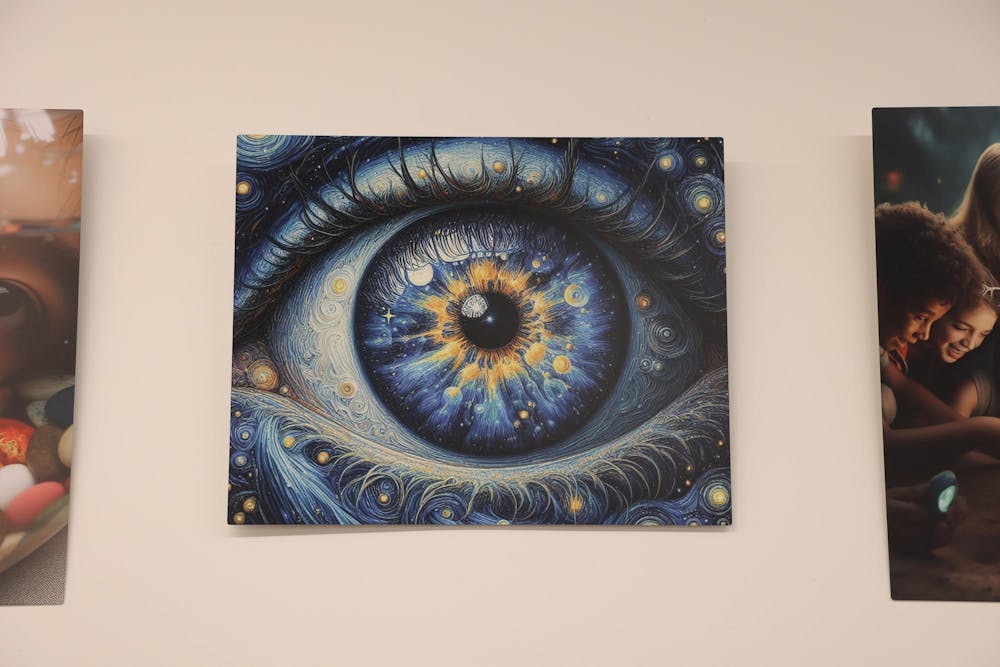Officially starting this Thursday, one winner each day through the end of the year will be awarded $100 for submitting a piece of AI-generated art work through the Optimus Awards, a UNC-partnered online art showcase.
William Ammerman, an adjunct instructor of emerging technologies in the Hussman School of Journalism and Media, sponsors the award and organized the first-ever AI art exhibit in the Triangle on Saturday.
The gallery featured the award-winning artwork that was printed on aluminum plates using the ChromaLuxe technique, a style of printing ink that produces vibrant images on metal. The metal sheets were then displayed in an exhibit at Innovate Carolina.
“I absolutely believe that AI art is a distinct field of fine art,” Ammerman said. “I actually crafted the Optimus Awards specifically to recognize it as such, to encourage us to embrace AI art and generative AI, but to also recognize it as its own unique type of art.”
Hannah Cardwell, a student in Ammerman’s Media and Journalism 588: Emerging Technologies class and award winner, said she considers herself to be an AI artist. Similar to handmade art, she said there are skills that separate beginner AI artists from professionals.
“I think anybody can be an AI artist, but I think it's how much time you put into it and how strategic you are with it,” Cardwell said.
Kelly Dennehy and Danielle Hart, students in the class who have generated art using AI, both said they would not consider themselves AI artists.
“I don't think that I would ever take the title of an AI artist, personally, just because I’m taking a prompt, and it's creating it,” Dennehy said. “AI is creating pretty artwork, but it's not me.”
Dennehy said she believes AI art can have meaning, but that human-made art, such as hand-made paintings, will be much more beautiful and symbolic than artificially produced work.



